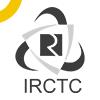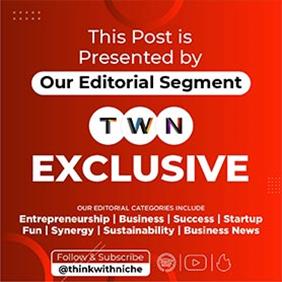Tesla to Launch Robotaxi Rides on June 22, Elon Musk Confirms

News Synopsis
Tesla is gearing up to kick off public rides in its highly-anticipated self-driving robotaxis starting June 22, according to CEO Elon Musk. The announcement was made in a post on X (formerly Twitter), where Musk responded to a user inquiry about the timeline.
“We are being super paranoid about safety, so the date could shift,” Musk clarified, emphasizing that June 22 is tentative.
The service will initially launch in Austin, Texas, with a small fleet of 10–20 Tesla Model Y SUVs, which will operate in a limited area under remote human supervision.
Tesla Shifts Focus to Autonomy Over Affordable EVs
Robotaxis Now Central to Tesla’s Future
With plans for a low-cost EV platform on the back burner, Tesla is staking its future on autonomous vehicles. Much of Tesla’s market valuation hinges on the success of its Full Self-Driving (FSD) system.
Despite ongoing skepticism due to safety, regulatory, and technical hurdles, Tesla CEO Elon Musk remains optimistic. He further shared that, beginning June 28, Tesla cars will drive themselves from the end of the factory line directly to the customer’s home.
Austin to Serve as Robotaxi Pilot City
Musk Takes a Dig at LA’s AV Rules
Tesla’s initial operations will be confined to Austin, where the company has already been testing autonomous vehicles. Musk hinted at regulatory challenges in other states by quipping:
“Austin >> LA for robotaxi launch lol.”
This remark likely refers to California’s stricter autonomous vehicle regulations, which Tesla plans to tackle later in the year as it expands the service.
Robotaxi Testing and Technology in Action
Model Y Vehicles Equipped with Advanced FSD Software
Earlier this week, Musk reposted a video showing a Tesla Model Y navigating a turn at an intersection in Austin—without a human driver. The vehicle had “Robotaxi” clearly marked, and was followed closely by another Tesla.
He confirmed the vehicles were using an upgraded version of the company’s Full Self-Driving (FSD) software.
Despite years of development, little is publicly known about the full scope of Tesla’s robotaxi initiative—details about remote monitoring, ride-booking access, and operating zones remain limited.
History of Tesla
The history of Tesla, Inc. is a fascinating blend of entrepreneurial vision, engineering audacity, and a relentless pursuit to accelerate the world's transition to sustainable energy. While often associated primarily with Elon Musk, the company's origins predate his involvement.
1. The Founding and Early Vision (2003-2004)
-
Incorporation (July 1, 2003): Tesla Motors was incorporated on July 1, 2003, by two engineers and entrepreneurs, Martin Eberhard and Marc Tarpenning, in San Carlos, California. They served as the initial CEO and CFO, respectively. Their vision was to build a car manufacturer that was also a technology company, with core technologies in batteries, software, and motors. They were inspired by the recall and destruction of GM's EV1 electric cars in 2003, seeing an opportunity to demonstrate the viability of high-performance electric vehicles.
-
Nikola Tesla's Influence: The company was named in tribute to the renowned Serbian-American inventor and electrical engineer, Nikola Tesla, known for his revolutionary work on alternating current (AC) electricity.
-
Early Funding and Elon Musk's Entry (2004): Martin Eberhard and Marc Tarpenning initially self-funded the company. In February 2004, Elon Musk, fresh from his success with PayPal, led Tesla's Series A funding round, investing $6.5 million of the $7.5 million raised. This made him the company's largest shareholder and the chairman of the board. While not an original founder, a later legal settlement allowed Musk to officially use the title of co-founder.
2. The Roadster and Early Challenges (2005-2009)
-
Roadster Development: Tesla's first vehicle, the Roadster, was based on a Lotus Elise chassis but was heavily re-engineered to accommodate an all-electric powertrain. Prototypes were developed from 2004 to 2007.
-
Roadster Launch (2008): The first-generation Tesla Roadster, a fully electric sports car, began production in 2008. It was a groundbreaking vehicle, becoming the first highway-legal, serial production all-electric car to use lithium-ion battery cells and achieve a significant range of over 240 miles (390 km) on a single charge. Its performance, with 0-60 mph in under 4 seconds, demonstrated that electric vehicles could be exciting and competitive with gasoline-powered sports cars.
-
Leadership Change (2007-2008): Martin Eberhard resigned as CEO in late 2007 and left the company in 2008. Elon Musk took over as CEO in 2008, a pivotal moment that cemented his public association with the brand.
-
Financial Struggles and Government Loan (2009): Despite the Roadster's innovation, Tesla faced significant financial challenges, particularly during the global financial crisis. In June 2009, Tesla was approved for a $465 million loan from the U.S. Department of Energy's Advanced Technology Vehicles Manufacturing Loan Program. This crucial funding supported the engineering and production of the upcoming Model S sedan. Tesla repaid the loan in May 2013, ahead of schedule.
3. Scaling Production and Mainstream Adoption (2010-2017)
-
Initial Public Offering (IPO) (2010): On June 29, 2010, Tesla Motors launched its IPO on NASDAQ, raising $226 million. This was a major milestone, allowing the company to further invest in its growth.
-
Model S (2012): Tesla released the Model S luxury electric sedan in 2012. It quickly garnered critical acclaim for its sleek design, performance, long range (over 265 miles initially), and innovative features like the large central touchscreen and over-the-air software updates. The Model S solidified Tesla's reputation as a serious automotive player.
-
Supercharger Network (2012 onwards): To address range anxiety, Tesla began building its proprietary Supercharger network in 2012, offering fast charging exclusively to Tesla owners. This rapidly expanding network became a key competitive advantage.
-
Model X (2015): The Model X, an electric SUV with distinctive "falcon wing" doors, was launched in 2015, further expanding Tesla's product lineup and catering to a growing market segment.
-
SolarCity Acquisition and Rebranding (2016-2017): In 2016, Tesla acquired SolarCity, a solar energy company co-founded by Elon Musk's cousins. This move signaled Tesla's ambition to become a comprehensive clean energy company, offering solar power generation and battery storage solutions (Powerwall, Powerpack) alongside its electric vehicles. In 2017, the company officially changed its name from "Tesla Motors" to "Tesla, Inc." to reflect this broader energy focus.
-
Model 3 (2017): The highly anticipated Model 3, designed to be a more affordable mass-market electric vehicle, began production in 2017. Despite early production challenges, the Model 3 quickly became one of the best-selling electric cars globally and a key driver of Tesla's growth and profitability.
4. Global Expansion, New Models, and Autonomy (2018-Present)
-
Gigafactories: Tesla significantly ramped up its manufacturing capabilities by building Gigafactories in Nevada (for batteries), New York (for solar panels), Shanghai (China, for vehicles), Berlin (Germany, for vehicles), and Texas (USA, for vehicles and headquarters).
-
Model Y (2020): The Model Y, a compact crossover SUV based on the Model 3 platform, was launched in 2020. It quickly became one of the best-selling EVs worldwide due to its combination of practicality, range, and performance.
-
Full Self-Driving (FSD) Beta: Tesla continued to develop and deploy its "Autopilot" and "Full Self-Driving (Supervised)" software, aiming for increasingly autonomous driving capabilities, though this has also been a source of ongoing regulatory and safety scrutiny.
-
Tesla Semi (2022): The Tesla Semi electric truck began limited production and deliveries in 2022, marking Tesla's entry into the commercial vehicle market.
-
Cybertruck (2023): After years of anticipation, the unconventional and futuristic Cybertruck electric pickup truck began initial deliveries in late 2023.
-
AI and Robotics: Beyond vehicles, Tesla has invested heavily in AI for its autonomous driving systems and has also ventured into robotics with projects like the Optimus humanoid robot, showcasing its broader technological ambitions.
-
Future Models: Tesla has teased and is developing future vehicles like the next-generation Roadster (planned for 2025) and a dedicated robotaxi ("Cybercab") platform (planned for 2026), further pushing the boundaries of electric and autonomous mobility.
-
Market Leadership: As of 2025, Tesla remains a dominant force in the electric vehicle market, a leading innovator in battery technology, and a significant player in renewable energy solutions, continuing to challenge traditional automotive and energy industries. However, it faces increasing competition from established automakers and new EV startups globally.
Conclusion: A Crucial Test for Tesla's Future
Tesla’s robotaxi rollout could be a game-changer not just for the company but for the future of mobility. As sales of EVs face pressure from growing competition and Musk’s controversial political stances, a successful autonomous ride service would reaffirm Tesla’s dominance in tech innovation. While the June 22 date is not set in stone, all eyes are on Austin as Tesla prepares to launch what could become a revolutionary leap in transportation.
You May Like









